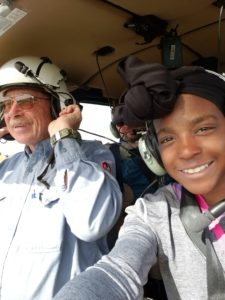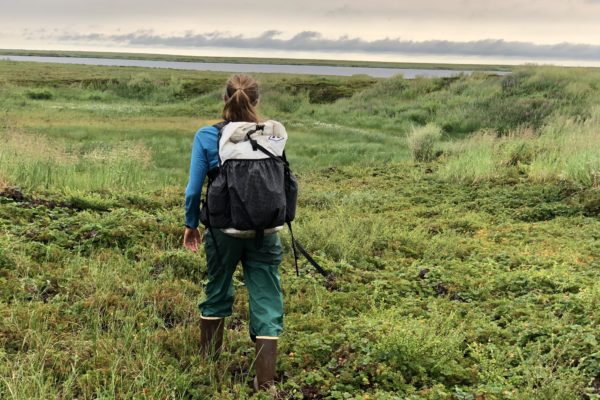 Finally done with all of my sampling yesterday with the help of other DREAM TEAM (aquatic team) members featuring other beautiful souls! Yay!
Finally done with all of my sampling yesterday with the help of other DREAM TEAM (aquatic team) members featuring other beautiful souls! Yay!
Today I can finally relax and take in this awesome experience. I have been thinking a lot about what to write about for this blog but I think I’ve waited too long and have accumulated soooo many memories that this blog could turn into a 10 page paper, so I’ll just highlight a few of my favorite memories with some context about the research I am doing.
The majority of my days have started and ended with walking across the lake. After a long day of soil gas sampling, pore water sampling, and lake sediment gas collection, the DREAM TEAM caught a wind big enough, in the right direction, that we could float across the lake in the boat instead of walking. Henry said, “Do you want to actually sail? I could use my backpack rain cover!” So of course, we all agreed! Gabe pulled his rain cover out and easily caught the wind and held it the entire way across. Henry and Paul wanted to create a kite with fishing line and his raincover to kite sail. I was the moral support in the middle of the boat! It took some fiddling around, but we were finally able to have both “kites” up and were sailing across the lake. This is one of my favorite memories because in this community even when we could relax we think of a way to experiment. And no one ever gives up on what they want here even if it takes a long time and proves to be quite difficult.
On our first helicopter day, July 4th (great way to celebrate), we met Stan, our pilot, who flew us across the tundra to another lake surrounded by burned tundra for us to survey. To survey, we walk around the lake and determine how much of the adjacent bank was slumping versus not slumping. By slumping, I am referring to cracked ground along the edges of the lake that will or is sliding into the lake. We can tell this is slumping because we see where the roots and vegetation has been pulled apart from the ground separating. We meant to survey multiple lakes but to our surprise the first burned lake was slumping almost everywhere! So we spent the time getting GPS coordinates and measuring the length of each slumping area. We were also able to get some soil gas samples and sediment cores from one of the slumps we found. It was such a beautiful lake with a lot of animal tracks so I’m sure we weren’t the only ones who found it a nice place.
Getting back into the helicopter, we felt a sense of accomplishment. And to top it all off, I got to sit in the front with Stan and got an amazing picture with him as well as a great view of the burned area from above. Another amazing day for the DREAM TEAM.
Finally, my last sampling day was spent at my favorite thermokarst structure! It’s this huge gully made from cracking that is about 10 meters away from the lake. The cracking goes all the way to the bank showing that it will eventually slump into the lake! This structure is pretty much the talk of the tundra at the moment. We were able to gather soil gas samples and sediment samples from along the bottom of the structure as well as outside of the disturbed area to compare the differences. The cracks in the structure were big enough to fit three 26 cm diameter chambers inside in order to measure gas flux from the thermokarst. I am so excited to see how this effects fluxes to the atmosphere. I think that we may see more greenhouse gasses coming out of the thermokarst where soil thawing results in cracking. This crack was deep (93 cm) and wide (53 cm) – that’s amazing! The water at the bottom of the structure was also really low in dissolved oxygen, a good sign that there may be different gas fluxes compared to other areas that we sampled from both soil and in the lake. I can’t wait to see!
I am having so much fun in the tundra! I am really going to miss it. But it is also about that time to go back and see what all this sampling will show. This two weeks has given me lifelong friends and amazing memories to share.
– Aquanette Sanders is a student at University of North Carolina Wilmington



